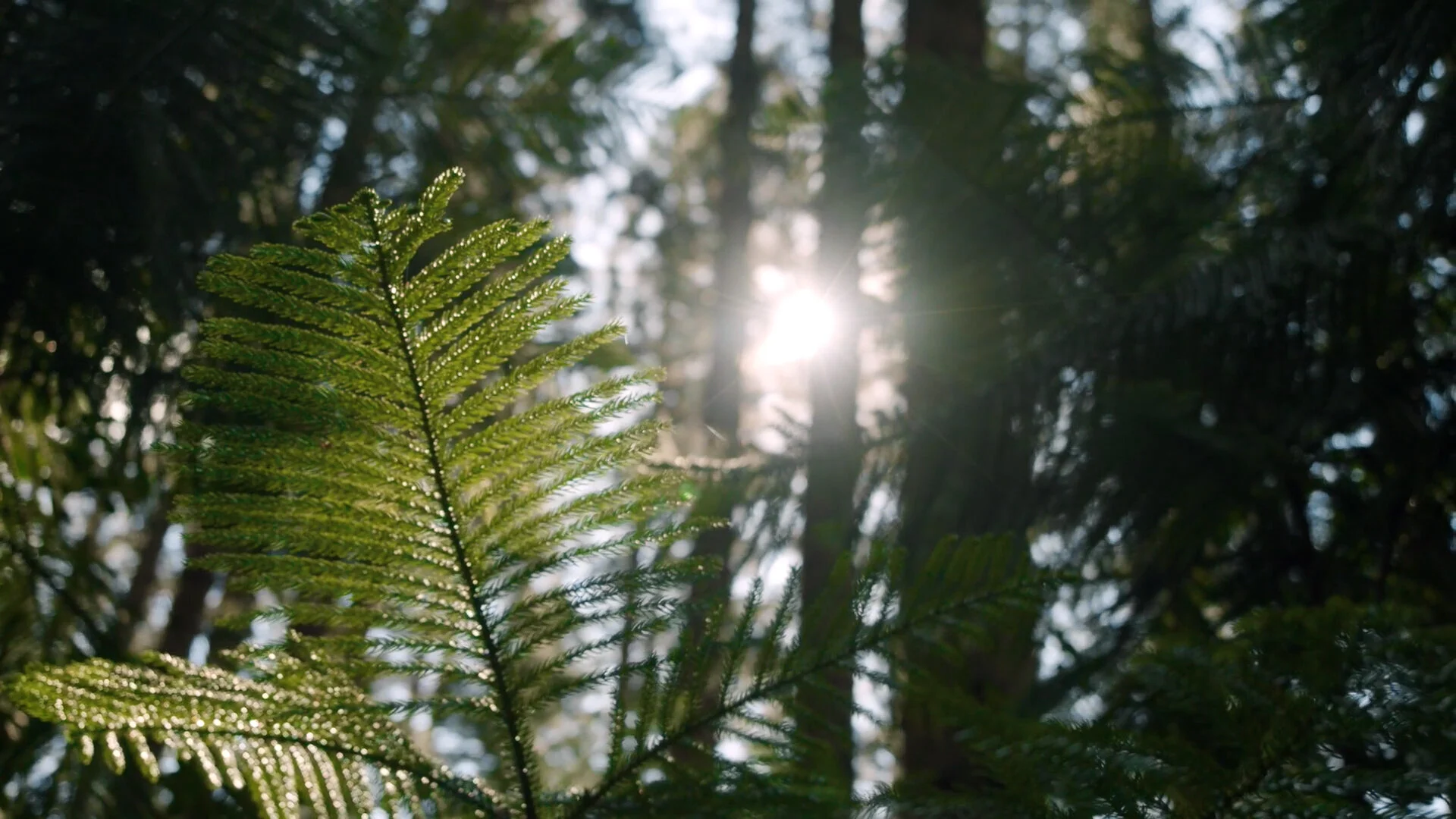Our cinematic picnic
Shoot day takeaways
Composition tips
Fill the frame.
If you’re struggling to make your subject stand out, consider moving closer or zooming in. This will let your subject fill up more of the frame, take up more real estate in your shot, and demand more of your viewers’ attention.
Straighten the horizon.
Avoid slanted horizons unless you want viewers to feel out of whack.
Use symmetry.
Center subjects for a polished and balanced feel.
Use the rule of thirds.
Divide your frame into thirds horizontally and vertically. Now place your subject at one of the intersection points, and there’s a good chance you’ll have a powerful composition.
Avoid headless bodies.
It’s often best to avoid chopping your subject’s head off if you’re showing the rest of their body.
Avoid head growths.
Try not to place objects behind your subjects that make it look like something’s growing out their heads (think spiky plants or telephone poles). Instead, position your subjects’ heads in front of empty areas that contrast with their hair or skin.
Follow the 180-degree rule.
When direction is important to your scene — like if you’re filming two people looking at each other while talking or a subject moving in a certain direction — then draw a circle around your subjects with a line dividing it in half (or into 180 degrees). Then only film your subjects from one side of the line. That way, the direction they face will always match between shots.
Watch the edges.
Be intentional about what’s inside or outside the edge of your frame. Either include subjects inside your frame with plenty of breathing room or clearly crop them out for a good reason, but don’t leave little slivers of subjects along the edge of the frame.
Move, move, move.
If you’re having trouble finding the right framing, keep moving! Gorgeous shots are often preceded by countless throwaway compositions.
Recording tips
Set up before recording.
Don’t press record until your shot is fully arranged if you can help it. That way you’ll avoid wasting time scrolling through setup footage when you’re editing.
New take, new clip.
Restart your recording every time you film a new take. This will ensure your footage is divided into clean clips when you’re editing, making it much easier to find the winning take, which a lot of times is your last one.
Review footage in the field.
Always look at your footage in the field if you have time. That will give you the chance to re-film something if you need.
Ditch a shot (with caution).
Feel free to drop a shot if it’s not working, but be careful that it won’t disrupt the flow of your sequence if you do.
Experiment and play.
A lot of times the best shots come from letting yourself go off script and have fun, so don’t be scared to improvise.
Get extra location shots.
Having extra location shots on hand when you’re editing is a huge help. Because they’re neutral to your sequence, you can often use them to fill a gap in your timeline without messing up the flow, so film a few extra shots of your environment if you can.
Movement tips
Keep handheld shots smooth.
For steadier handheld shots, always hold the camera with two hands, bend your elbows and tuck them into your rib cage, bend your knees, and (if possible) hold your breath. Also if you’re going to move the camera while handholding it, try to move your entire body, not just your arms.
Repeat takes of camera movement.
For shots where you’re moving the camera, it’s best to film a few takes to make sure you’ve captured a steady shot. Even if the motion looks smooth in the LCD, record a backup take or two just in case.
Wider means steadier.
Zoom out for steadier handheld or moving shots. Shakiness will be much more dramatic when you’re zoomed in.
Other tips
Planning means efficiency.
If you think about shots ahead of time, you can maximize your shoot time and film scenes out of order without worrying that your sequence won’t flow.
Consider manual focus.
If your camera’s autofocus is having trouble, consider switching to manual focus. This will lock the focus so that it doesn’t shift during recording, but make sure your subject is staying in the same spot while filming.
Face the light for flares.
Point your lens toward a light source like the sun to create flares in your shot.
Selfies need flip screens.
If you’ll be filming yourself a lot, a camera with a flip screen is a must for your sanity.
Pricey gear is nice, but not needed.
Like everything that’s expensive, video gear is the same. Do you need pricey stuff to do great work? Naw. But is it nice to have? Yeah.







